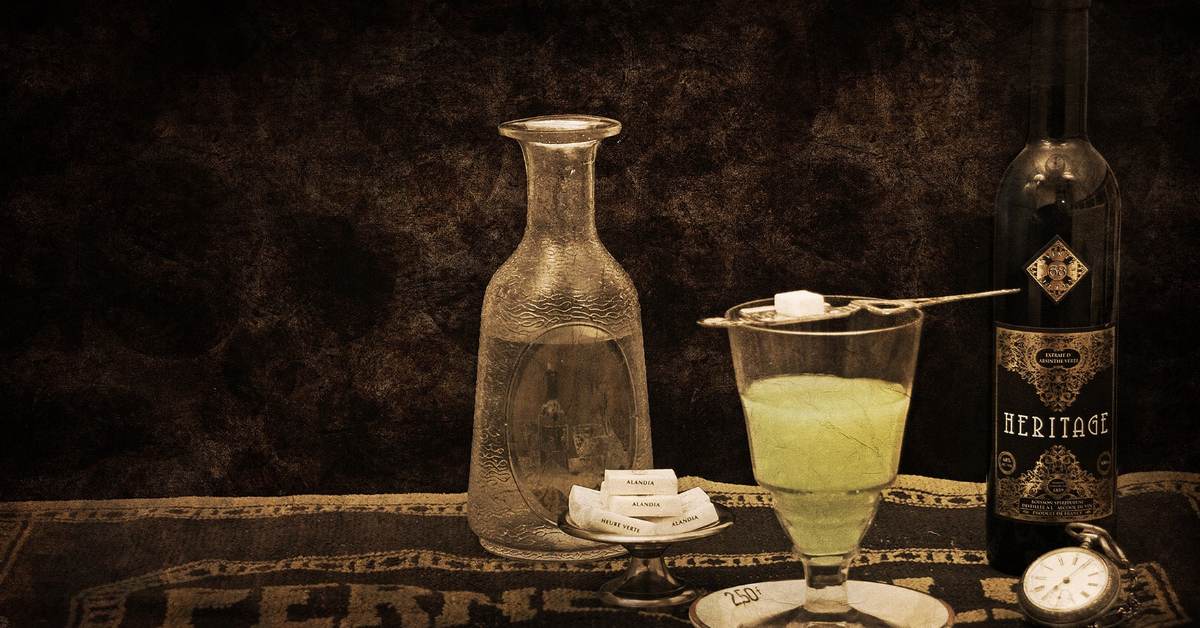Anise-based spirits are known for their distinct licorice-like flavor, which is derived from the essential oil of anise seeds. Two popular examples of anise-based spirits are Absinthe and Sambuca.
- Absinthe: Absinthe is a highly aromatic and potent spirit that originated in Switzerland in the late 18th century and gained popularity in France in the 19th century. It is traditionally made by distilling botanicals, including anise, fennel, and wormwood. The key flavor profile of absinthe comes from the herbaceous and bitter notes of wormwood combined with the sweet, herbal, and slightly spicy characteristics of anise and fennel.
One of the distinguishing features of absinthe is its louche effect. When water is added to absinthe, it turns cloudy and milky due to the precipitation of essential oils. This process is often achieved by slowly dripping water over a sugar cube placed on a slotted spoon resting on the rim of the glass. This traditional ritual, called louching, is a hallmark of the absinthe-drinking experience.
Absinthe can be enjoyed in various ways: diluted with water to release its complex flavors, mixed into cocktails, or used in culinary applications. Classic absinthe cocktails include the Sazerac and the Corpse Reviver No. 2. However, it’s important to note that absinthe is a high-proof spirit, and it should be consumed responsibly and in moderation.
- Sambuca: Sambuca is an Italian anise-based liqueur that is often enjoyed as a digestif. It has a sweet and intense licorice flavor, with additional hints of elderflower and other botanicals. Sambuca is usually clear, but there are also variations available in different colors, such as blue or red, which derive their hues from natural or artificial additives.
Traditionally, Sambuca is served neat or with a few coffee beans floating in the glass, a practice known as “con la mosca” (with the fly). The coffee beans are primarily used for aromatic purposes and are not meant to be consumed. The addition of the beans enhances the overall sensory experience.
Apart from sipping Sambuca neat, it can be enjoyed in various cocktails and mixed drinks. The most famous Sambuca-based cocktail is the “Sambuca con la Mosca,” which involves serving Sambuca with coffee beans. Other popular cocktails include the Sambuca Sour and the Sambuca Martini.
It’s worth mentioning that Sambuca also has regional variations within Italy. For example, in the southern region of Calabria, a popular type of Sambuca called “Vecchio Amaro del Capo” is produced. It includes additional herbal and citrus flavors, making it slightly different from the classic Sambuca.
Both Absinthe and Sambuca offer unique experiences for those who appreciate the distinctive taste of anise. While absinthe is characterized by its strong herbal complexity and louche effect, Sambuca provides a sweeter and more approachable flavor profile, often enjoyed as a digestif or in cocktails.

